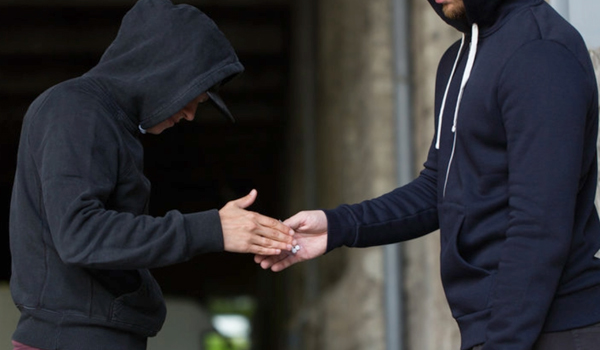Gang leaders face jail over forcing people to conceal items inside their body
A new criminal offence of ‘coerced internal concealment’ is to be introduced as an amendment to the Crime and Policing Bill to crack down on gang leaders who force people to hide items inside their bodies to avoid detection.
This practice, also known by the street names ‘plugging’, ‘stuffing’ and ‘banking’, is typically used by organised gangs to transport items such as drugs, money and SIM cards from one location to another.
It relies on forcing or deceiving children and vulnerable adults into ingesting or hiding items inside their bodily cavities and is often linked to County Lines drug running.
Where senior gang figures are found to have coerced other individuals to ingest or carry specified items inside their bodies, they will face up to ten years behind bars.
“Internal concealment is an extremely dangerous practice. It can be fatal if drug packages break open inside the body and can cause significant physical and psychological harm to those forced to do it,” said the Home Office.
Lucy D’Orsi, the chief constable of British Transport Police said: “We welcome this new measure which increases the safety of those at risk and supports bringing their abusers to justice.
“Safeguarding the vulnerable is a priority for BTP’s County Lines Taskforce. Our bespoke unit, made up of experienced social work professionals, works to pull the exploited from the clutches of organised crime groups by providing them with fast time support and resources from our specialist partners.
“We continue to put the exploited and the vulnerable at the forefront of our fight against County Lines gangs and take a zero tolerance stance against anyone who profits from the exploitation of children.”
Jess Phillips, Minister for Safeguarding and Violence Against Women and Girls, said there was “something truly evil about the gang leaders who degrade young girls, young boys and vulnerable adults in this way, forcing them to put their lives at risk”.
“This new offence will go alongside other measures in our landmark Crime and Policing Bill to turn the tables on the gang leaders and hold them to account for exploiting children and vulnerable adults,” she added.
Latest statistics from the County Lines Programme show that since July 2024, law enforcement activity resulted in more than 1,200 line closures and 2,000 arrests – including the arrest and subsequent charging of more than 800 violent offenders controlling the lines.
There were also more than 2,100 safeguarding referrals for children and vulnerable people.
The County Lines Programme also provides specialist support for children and young people to escape the drugs trade.
More than 320 children and young people received dedicated specialist support during this period, which can include one-to-one casework for young people and their families to help prevent exploitation or support their safe exit.
The criminalisation of ‘coerced internal concealment’ will ensure that victims are properly recognised and receive the support they need.
“It also sends a clear message to offenders that the punishment for this crime will match the impact of the harm they have caused,” the Home Office said.
Kate Wareham, strategic director of Young People, Families and Communities at Catch22 said: “Catch22 welcomes the introduction of tougher consequences for adults who force children and vulnerable young adults into carrying drugs through invasive methods of bodily concealment.
“From our County Lines, child exploitation and our Redthread embedded youth work in A&E services across England, we know the devastating, life changing physical and mental impact of this abuse on its young victims.
“Robust, specialist exploitation and violence reduction services are essential to ensure child victims are supported to process their trauma and safeguarded from further harm. But we need to prevent exploitation happening in the first place. By targeting the perpetrators, this new offence of coerced internal concealment is a crucial step forward towards that.”


